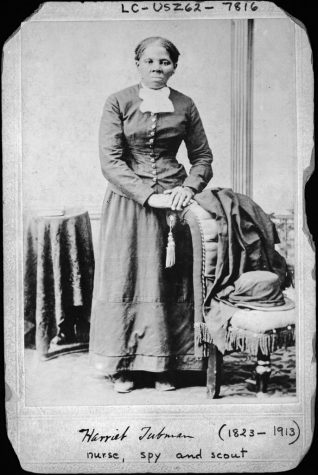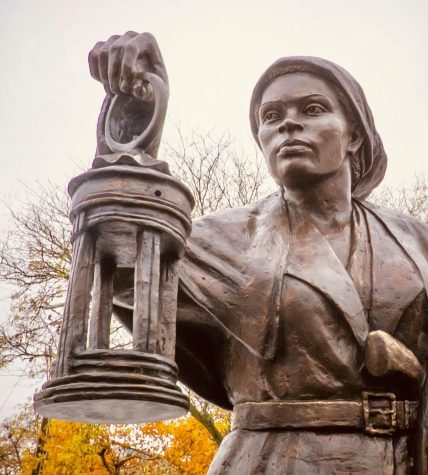Harriet Tubman: more than meets the eye
May 27, 2021

Being a slave since birth, Harriet Tubman was always one to stand up for people. This character trait lived in her throughout her entire life. Born into slavery in Dorchester County, Maryland, she started her life as a house servant but was eventually sent to work in the fields.
Traumatic circumstances motivated her to break away from the existence she was forced to endure; during that time, she was hit in the head with a 2-pound weight after she was showing resistance to being a slave by trying to protect a man attempting to escape. This resulted in her having severe headaches and narcolepsy for the rest of her life (Michals).
After growing ties with the men who helped her family members escape, Harriet was introduced to the underground railroad, through which she began helping handfuls of slaves escape. Slave owners posted a $40,000 bounty on her head to bring her in dead or alive (Michals).
Relentlessly working for hours and never losing a passenger nor getting caught, Tubman learned the ins and outs of the railroads and surrounding towns, making her a huge asset to the Union Military during the Civil War, which led to her becoming a Union spy (Michals).
In her article on Harriet Tubman, Debra Michaels stated that Tubman would dress up as an older woman and wander the streets under Confederate army (CSA) control, talking to slaves, attempting to figure out where the CSA had troops set up and where their supply lines were. Besides gaining this information, she did all she could to help the slaves get the food and supplies that they needed, before she reported back to the Union leaders (Michals).
According to Michals, Harriet Tubman worked her way up to being a Union Army leader who helped soldiers raid a rice plantation along the Combahee River in South Carolina. Having a great deal of credibility with the slaves, Tubman connected the Union army with slaves that had been spying on nearby CSA fortifications. This enabled the Union forces to develop an effective plan of attack (Michals).
After the civil war ended, Tubman returned home to the land she bought in Auburn, New York. She worked very hard to make it a safe place for her family and friends. Although she became very famous, she still struggled financially, so she got by through the help of her family and friends, enabling her to acquire just enough money to help her live on (Little).
Even long after her death, Harriet Tubman is still remembered as a war spy, nurse, abolitionist, and hero for how she helped slaves. She had many schools, organizations, and museums named in her honor, including the Harriet Tubman Home for the Aged in Auburn, New York and the Harriet Tubman Museum in Cambridge, Massachusetts.

Sources
- Article Title: Harriet Tubman
Author: Debra Michals
Website Name: Women’s History
URL: https://www.womenshistory.org/education-resources/biographies/harriet-tubman
Access Date: April 27, 2021
Publisher: National Women’s History Museum
Last Updated : 2015
Original Publish Date:
- Article Title: Harriet the Spy; How Tubman Helped the Union Army
Author: Becky Little
Website Name: National Geographic
Access Date: April 27, 2021
Publisher: National Geographic, INC.
Original Publish Date: April 21, 2016
Images:
file name of image: 24438722461_d0fe41e563_b.jpg
original source link: https://www.flickr.com/photos/iip-photo-archive/24438722461/in/photostream/
file name of image: Tubman-statue.jpg
original source link: https://mediad.publicbroadcasting.net/p/wxxi/files/styles/large/public/201911/Tubman-statue.jpg




